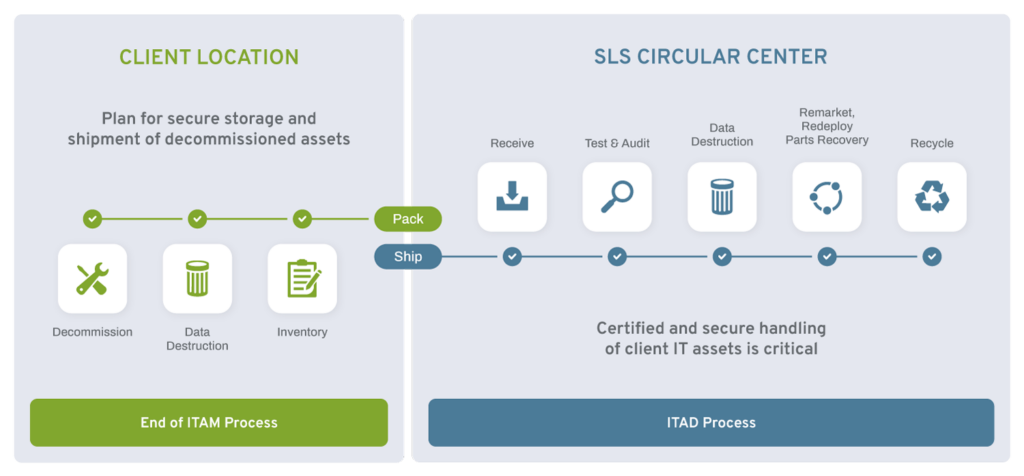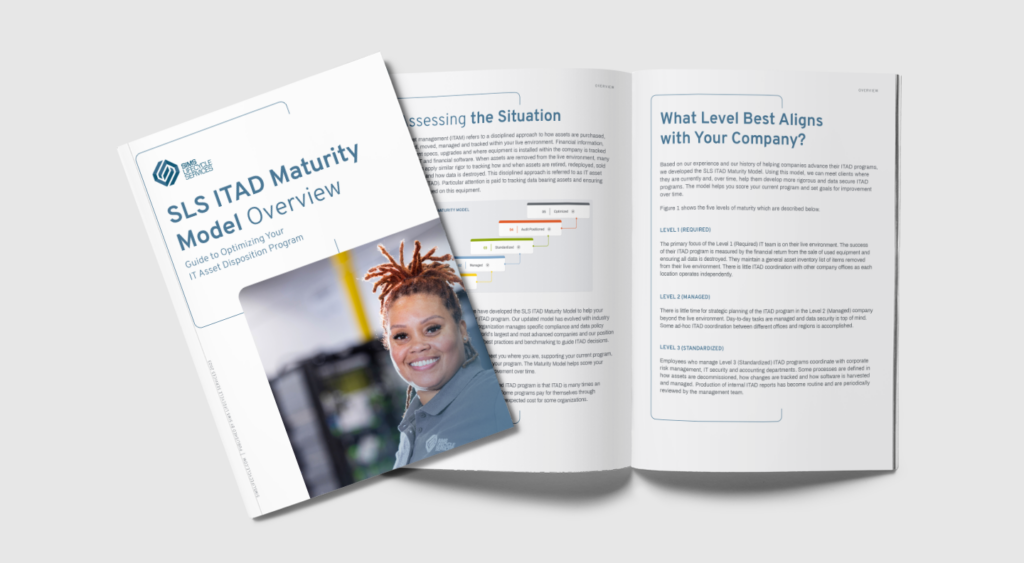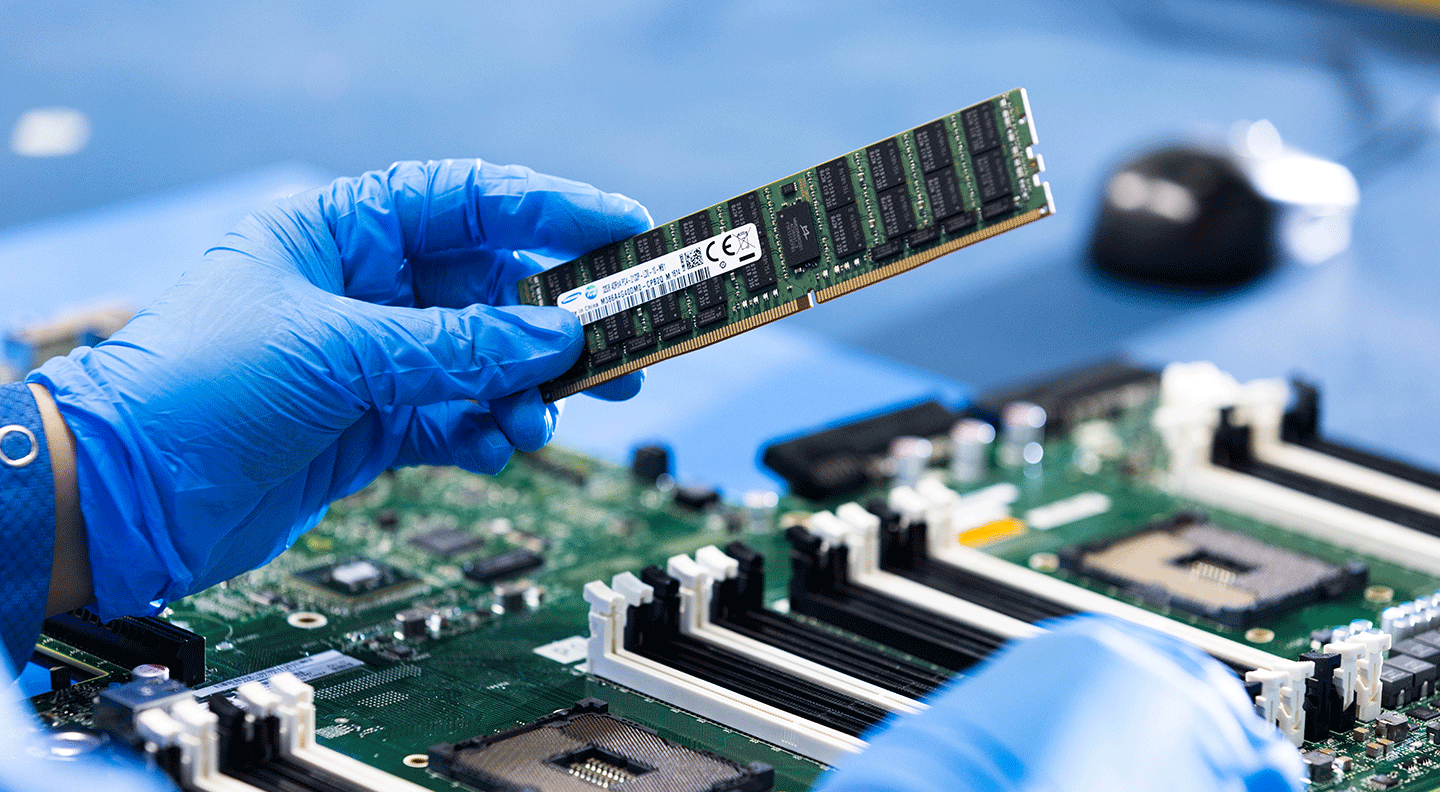Maximizing the Lifecycle Value: How IT Asset Management and IT Asset Disposition Programs Work Together
Lifecycle management of IT assets for enterprise companies involves a systematic approach to the acquisition, utilization, maintenance, and eventual reuse or retirement of technology resources. This blog post explores the complementary relationship between IT Asset Management (ITAM) and IT Asset Disposition (ITAD) programs and how their collaboration is instrumental in optimizing the entire lifecycle of IT assets.

The IT Asset Lifecycle
Before diving into the collaboration between ITAM and ITAD, let’s briefly outline the IT asset lifecycle:
Procurement: The acquisition of IT assets.
Utilization: Putting assets into use to achieve business objectives.
Maintenance and Upkeep: Ensuring assets operate efficiently and securely.
Decommissioning: Identifying assets that have reached the end of their useful life within your live environment.
Disposition: The process of removing IT assets from your live environment and reusing, redeploying or recycling IT assets. Disposition work is typically done by a third party company.
The Complementary Relationship Between ITAM and ITAD
Asset Tracking and Inventory Management (ITAM):
ITAM starts by tracking and documenting every IT asset as soon as it’s acquired. This inventory becomes a valuable resource as assets are used and when assets reach the end of their lifecycle.
Data accuracy: ITAM ensures that the asset information is up-to-date and accurate. This data is essential for internal accounting and when planning for asset retirement in the ITAD process.
Data Security (ITAM & ITAD):
Disciplined ITAM identifies and tracks data bearing assets. This identification process is crucial for data security.
ITAD takes over during decommissioning and disposal, focusing on securely erasing or destroying data to mitigate the risk of data breaches.
Cost Optimization (ITAM & ITAD):
ITAM helps organizations make informed decisions about asset lifecycle management, considering factors such as maintenance costs and asset performance.
The ITAD process evaluates the value of retired assets, deciding whether they should be remarketed, redeployed, recycled, or securely disposed of. This collaboration ensures cost-efficiency throughout the asset’s lifecycle.
Compliance and Reporting (ITAM & ITAD):
The systematic tracking of IT assets throughout their lifecycle by the ITAM team provides an audit trail that demonstrates all digital data is secured and destroyed during the ITAD process.
ITAD builds on this compliant tracking to ensure that retired assets are disposed of responsibly, in compliance with environmental and data protection laws.
Sustainability (ITAM & ITAD):
ITAM focuses on tracking the environmental impact of assets from procurement to disposal.
ITAD leverages this information to make eco-friendly choices during asset disposal, prioritizing reuse over recycling and ensuring sustainable and responsible electronic waste management when assets are recycled.
Summary
ITAM and ITAD are not standalone programs; they can be structured to holistically manage IT assets. Their integration ensures that assets are managed efficiently, securely, and responsibly throughout their lifecycle, from acquisition to disposal. When these two programs are managed together, organizations can maximize the value of their IT investments while minimizing risks and environmental impact.

New! ITAD Maturity Model e-Book from SLS
Improve your ITAD program with the SLS ITAD Maturity Model.
